Butter is back in fashion, but brands are struggling to cash in. How can they make sure they don’t leave the opportunities to own label?
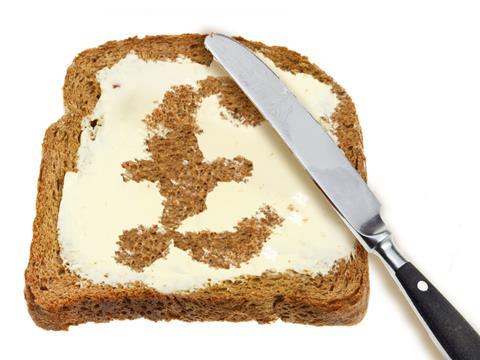
Fat is back in fashion. As sugar evokes the horrified public health reaction previously reserved for satfat, Britons are basking in the once-forbidden golden glow of butter.
Value sales are up 3.3% on a volume rise of 8.6% [Kantar 52 w/e 24 May 2015], driven by the success of spreadable and the new breed of hybrid ‘with butter’ spreads. But all is not sunny in the butter aisle. In block, brands are suffering as own label steals share, and with spreadable prices falling, it could be the next target for own-label domination.
So what are brands doing to hold on to stand up to the threat? And with overall BSM down in both value and volume, how can the market return to growth?
Innovation might not be the answer. It’s been a mixed year for new products, with consumers unconvinced by some big brand attempts to change BSM habits.
Lurpak has withdrawn its foodie-targeted Cook’s Range, which had reached a value of £2.3m, over the past two months, while Clover Seedburst was axed in summer 2014.
However, both Unilever and the wider category benefited from its introduction of three ‘with butter’ hybrids. Flora Gold and Bertolli with Butter were launched in May 2014, and Caroline Jary, brand building director for spreads at Unilever, says Gold has achieved value sales of £4.8m (total Flora is £148.5m), while Bertolli with Butter shifted £7.3m [Nielsen 52 w/e 20 June 2015].
When the hybrids launched, competitors were sceptical about the potential for repurchase but, Jary says: “At 33.9%, the combined repeat purchase rate for both SKUs is high, demonstrating the success of the products in terms of meeting changing consumer needs.”
To complete the Unilever trio, Stork with Butter launched in April 2015 with the aim of reinvigorating baking spreads - and, with home baking back in growth and Lurpak Baking, part of the axed Cook’s Range, now out of the equation, it might just be possible. Value sales of the product have reached £532,000 [Nielsen 52 w/e 20 June 2015], with penetration at 2.2%.
Meanwhile, Dairy Crest’s launch of flavoured Clover Cooking Sprays in April 2015 was triggered by the company’s Dairy for Life category strategy. It identified ‘meal makers’ as a growth driver and, says head of BSO Louise Pike, the sprays were developed to “provide consumers with a quick, convenient and healthy way to add excitement and flavour to everyday meals.”
As far as results go, she says, “we are delighted by the strong distribution and customer support the range has received and we will be closely monitoring its performance.”
As these innovations continue to bed in, the year in prospect may well be a quiet one for NPD as brands batten down the hatches and try to get through challenging trading conditions.
Mike Walker, business unit director at Arla Foods, owner of Lurpak and Anchor, says: “We do need to find the role for innovation within BSM, and there are opportunities to fight off adjacent categories like mayonnaise, soft white cheese, peanut butter and oils, but recent history would show that in BSM it’s quite difficult to drive real traction with innovation.”
BSM brands have their eye on c-store customers
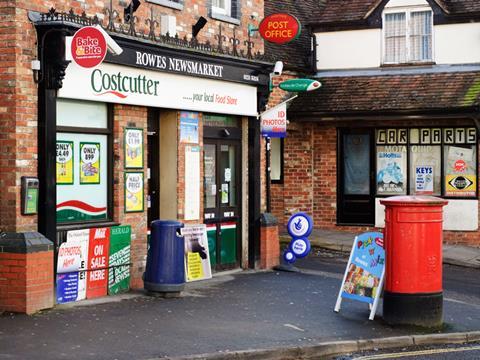
More and more BSM brands are fighting for their spot in convenience chillers, keen to get a piece of the top-up mission.
In May 2015, Müller Wiseman Dairies bolstered its presence in the channel with the launch of its MWD Black & White branded block butter (rsp:£1.49/250g), aimed at foodservice and convenience retail. “We have unlocked a number of opportunities with our customers and have had very positive feedback,” says butter business unit director Sean Whitfield.
Arla Foods is also looking to put Lurpak on more convenience shelves. “There are areas where we can push distribution more, particularly in that convenience sector. We’ll do a little bit of work on that,” says Arla’s Mike Walker.
Similarly, Dairy Crest is aiming to improve the mixed fortunes of its brands in convenience.
Country Life spreadable is doing well in the channel with growth at 11.1% [IRI 52 w/e 20 June 2015], but Clover’s performance in convenience is “tracking slightly behind the total market”, says Dairy Crest’s Louise Pike.
“It is hoped that Dairy Crest’s improved range, tailored to the needs of the c-store retailer and shopper, will help drive the brand forward in this channel,” Pike says.
The changes, introduced in April 2015, include new eight-pack cases of Country Life spreadable 250g £1.75 price-marked packs, while 500g packs are now available in eight as well as 12-pack cases.
“We want to ensure that the price points available for our products in convenience are as competitive as in the larger retailers,” says Pike.
Dairy Crest’s Utterly Butterly overtrades in convenience retailers, and this looks set to continue due to a new listing in One Stop and a £1.00 250g PMP also introduced in April 2015. But this year, Utterly Butterly will have serious company.
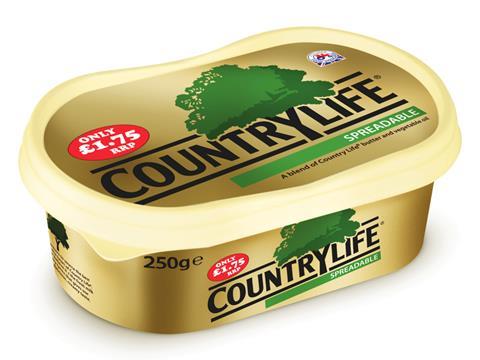
Promotions
The category remains one of dairy’s most heavily promoted, and sales on deal were 61.4%, up from 57.3% last year. Own-label pricing is down as a combined result of the price war, lower input costs and the threat from discounters; Aldi and Lidl were the only retailers to see rises in BSM value sales, up 21.6% and 11.8% [Kantar].
The cost for brands of the drop in own-label pricing, down as far as 85p/250g in some cases, has been high - especially in block where own label, says Arla’s Walker, now accounts for 57% of sales.
“To reverse the decline of the category, retailers should be focusing on the right brands to add value”
Dairy Crest made dramatically deep TPR cuts to Country Life, which hit £1/250g in Tesco and Morrisons in 2015, while Anchor block deals have been 2 for £2.50 or 2 for £2.
Even Lurpak, the category’s leading brand and distinct from own label because it’s a lactic rather than sweet cream butter, has increased promotions. Walker reports that it’s in 0.1% value and 3.4% value growth [Nielsen w/e 20 June 2015].
This can be attributed partly to marketing (the £7m Cook’s Range launch campaign had a halo effect on Lurpak’s core products), but also to more deals.
“We’ve mainly done 2 for £3 on block and 2 for £4 on 500g spreadable, versus 2 for £5 last year,” says Walker. “We touched £300m brand value within the past 52 weeks and have just fallen back slightly - driven by the reduction in promotional price year on year. All brands are promoting more, to fight each other and fight against some of that own-label pricing.”
Maybe not quite all brands. Kerrygold, with a total brand value of £21.8m, is digging its hooves in. “Price per kilo in branded block is down by 7%, but we’ve not reduced our prices as heavily as other brands,” says Ben Webster, senior category manager at Adams Foods. “To reverse the decline of the category, retailers should be focusing on the right brands to add value; brands with the highest base rate of sale, a unique customer and high loyalty.”
Own label
For brands, the challenge from own label continues. BSM private-label value sales are up a hefty 8.9%, while volume has risen 17.8% [Kantar]. Price reductions have changed the dynamic of the fixture, with Tesco, Asda and Sainsbury’s all stripping out their value-tier own-label block.
A Sainsbury’s spokeswoman says: “In some instances our by Sainsbury’s product price is now lower than the price of the equivalent Basics product - our BySainsbury’s butter is now 85p/250g, whereas our former basics product was 90p/250g.”
Müller Wiseman Dairies’ £17m investment in its Market Drayton butter processing plant led to the launch in May of its own block butter for the convenience sector (see left), and private label block for the mults.
Although MWD’s non-block capability is at other sites, Market Drayton is able to produce pack sizes from 180g to 500g and lactic as well as sweet cream variants.
“There are a number of factors fuelling the return to growth of own-label block butter, including the ‘natural’ trend and the resurgence in the popularity of home baking,” says Sean Whitfield, butter business unit director. “But the price-competitiveness of own-label block butter cannot be ignored as the gap between own-label and branded offerings has widened over the past year, helping it to outperform the total block market.”
At least for now, the threat is contained. Brands have hope for growth - and it’s spreadable. Despite the fact that traditional ‘host’ products continue to struggle, value sales of spreadable butter are up 9.9% on volumes that have risen 13.3% [Kantar]. By contrast, block value sales are down 4.4% on volumes up 3%.

Spreadable
Prices might be falling in spreadable, but own label has a tiny presence in the sector - accounting for just 2% of sales, according to Kerrygold’s Ben Webster.
“The positive [for butter brands] is that when you grow spreadable you’re getting the switching up from the dairy spreads category rather than from block butter, because block is a very different usage occasion,” he says. Kerrygold now has a two-year plan in place to improve the visibility of its spreadable product.
With so much room for own label to grow in spreadable, “the spreadable sector looks to have private-label potential for a high-quality proposition in both packaging and product delivery in this higher-growth and now established category” says Sean Whitfield of MWD.
Own-label dairy spreads
Louise Pike of Dairy Crest adds: “Retailers’ own brands have also had a successful year within dairy spreads”. Launches in this area include a reduced-fat spreadable blend with 20% butter at Morrisons.
With shoppers switching out of dairy spreads and brand equity facing erosion, BSM marketing departments have had a lot of work to do.
Having put £10m behind Gold from Flora’s 2014 launch (and claimed nearly half that back in Gold sales), Unilever’s most recent spend was the £3.3m Stork with Butter campaign, with a TV ad that ran for eight weeks from May 2015. It’s also maintaining Flora Pro.Activ’s It Takes a Village campaign this year with a £3.3m investment, and paying £3.75m to keep Bertolli with Butter in airtime throughout 2015.
The newest creative will come from Arla as it extends its brand-wide Anchor campaign, launched in June, from Cheddar to butter.
Featuring a family of anthropomorphic beasts called Hugglers, the ‘That’s The Good Stuff’ strapline will be used for butter ads now in development with creative agency Creature.
In the meantime, Arla, which refreshed the look of Lurpak at the beginning of 2015, is sticking with its £7m Go Freestyle Lurpak spreadable campaign. “Sales have increased since the campaign launched in April 2015,” says Arla’s Walker.
Strategies for Clover, the UK’s biggest dairy spread brand, have recently included a shopper sampling campaign at Sainsbury’s in collaboration with McCain Ready Baked Jackets, on-pack promotions with Kingsmill, and Cooking Spray samplings as part of the Gastro Alfresco roadshows.
“We want to ensure that the price points available for our products in convenience are as competitive as in the larger retailers”
Spend may increase; Pike of says “the brand has also been activated via an ‘always on’ digital and social programme and will see upweighted above-the-line support later in the year in support of upcoming new product development.”
Meanwhile, Kerrygold has spent its £1.5m budget on the Tales From The Meadow summer campaign, which included a stunt where pieces of a giant cake sculpture designed to recreate the rolling Irish farmland from where the brand hails were given away.
Of course, it’s own label that’s been involved in a big block butter giveaway in the past year. With spreadable continuing to pay off for brands, this sector could be next for own label.







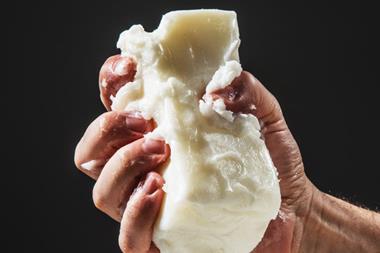
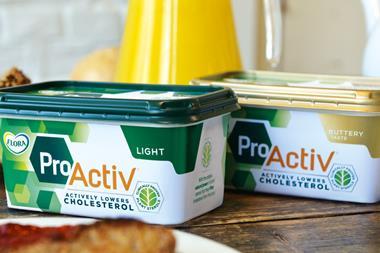

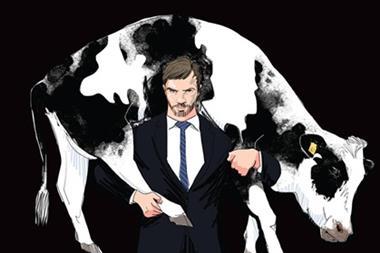







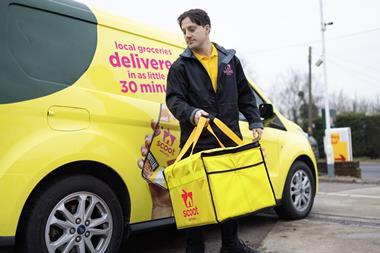
No comments yet